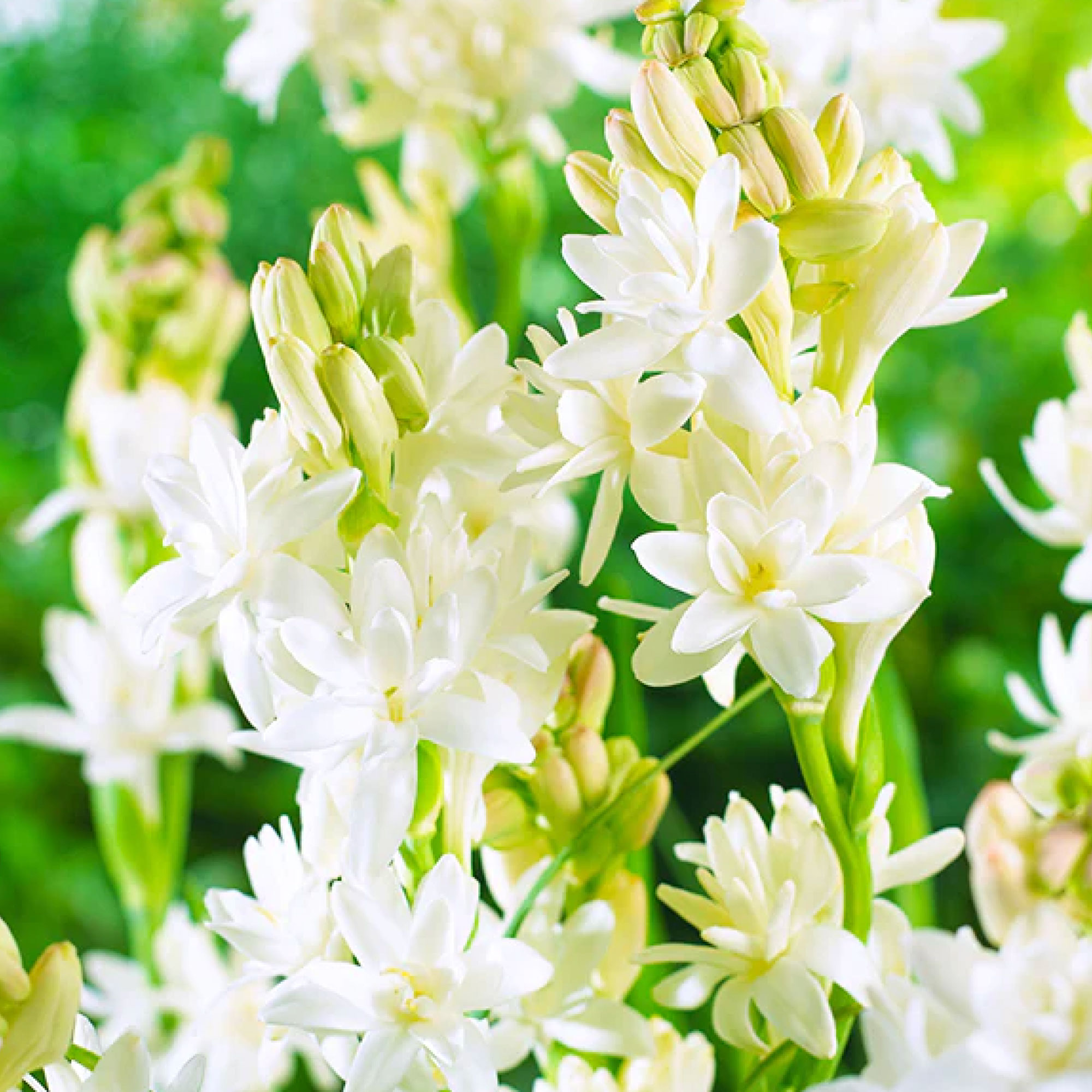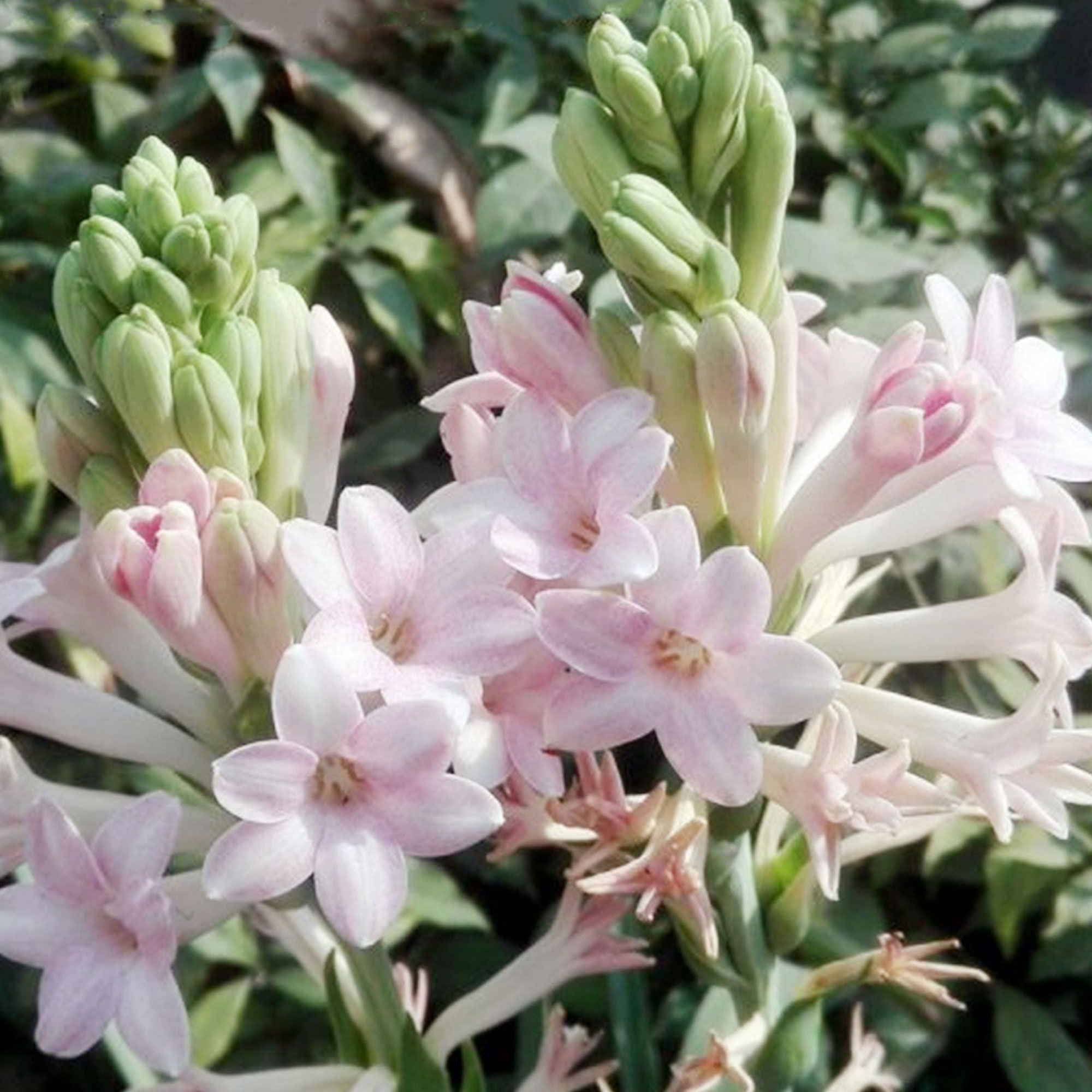How to grow tuberose – for clusters of sweetly scented blooms right through the summer season
Everything you need to know to ensure one of the most fragrant flowers you can grow thrives in your garden
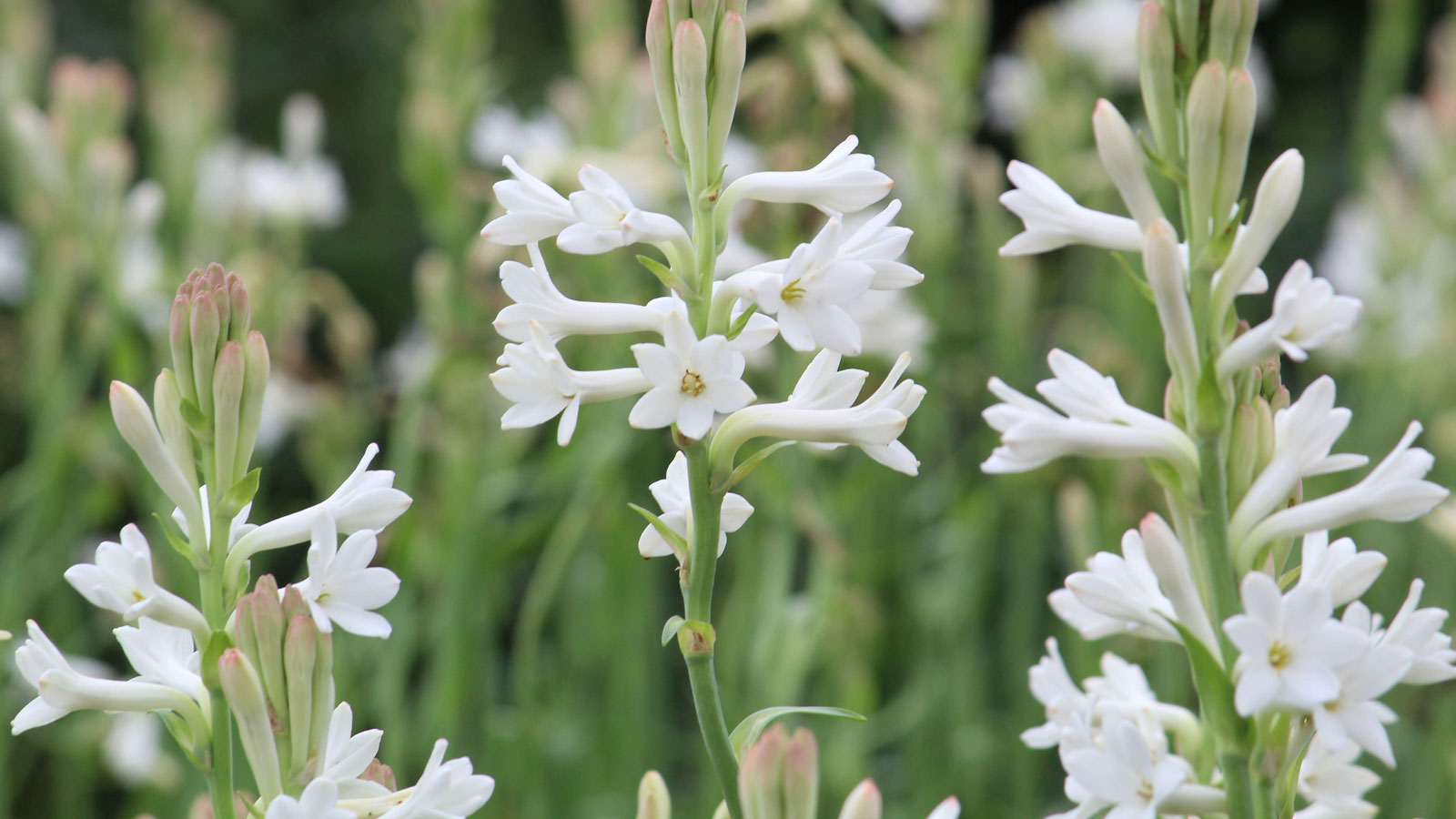

Tuberose is one of the most deliciously fragranced flowers you can add to your planting design. The clusters of waxy white blooms have a strong spicy scent that's often used in perfumes and candles. This means they're a great cut flower for the house too, as well as star performers in the summer garden.
This semi-succulent plant is part of the agave family, so despite the name it's not a true rose. The roots are tuberous bulbs that multiply quickly if conditions are right. The clusters of trumpet-shaped flowers in white, cream and soft pink colors are held on tall slender spikes that add a vertical accent to planting.
This makes tuberose one of the best perennials if you're looking for a combination of summer scent and luxe blooms. Now find out how to grow tuberose to enjoy this intoxicating beauty in your garden.
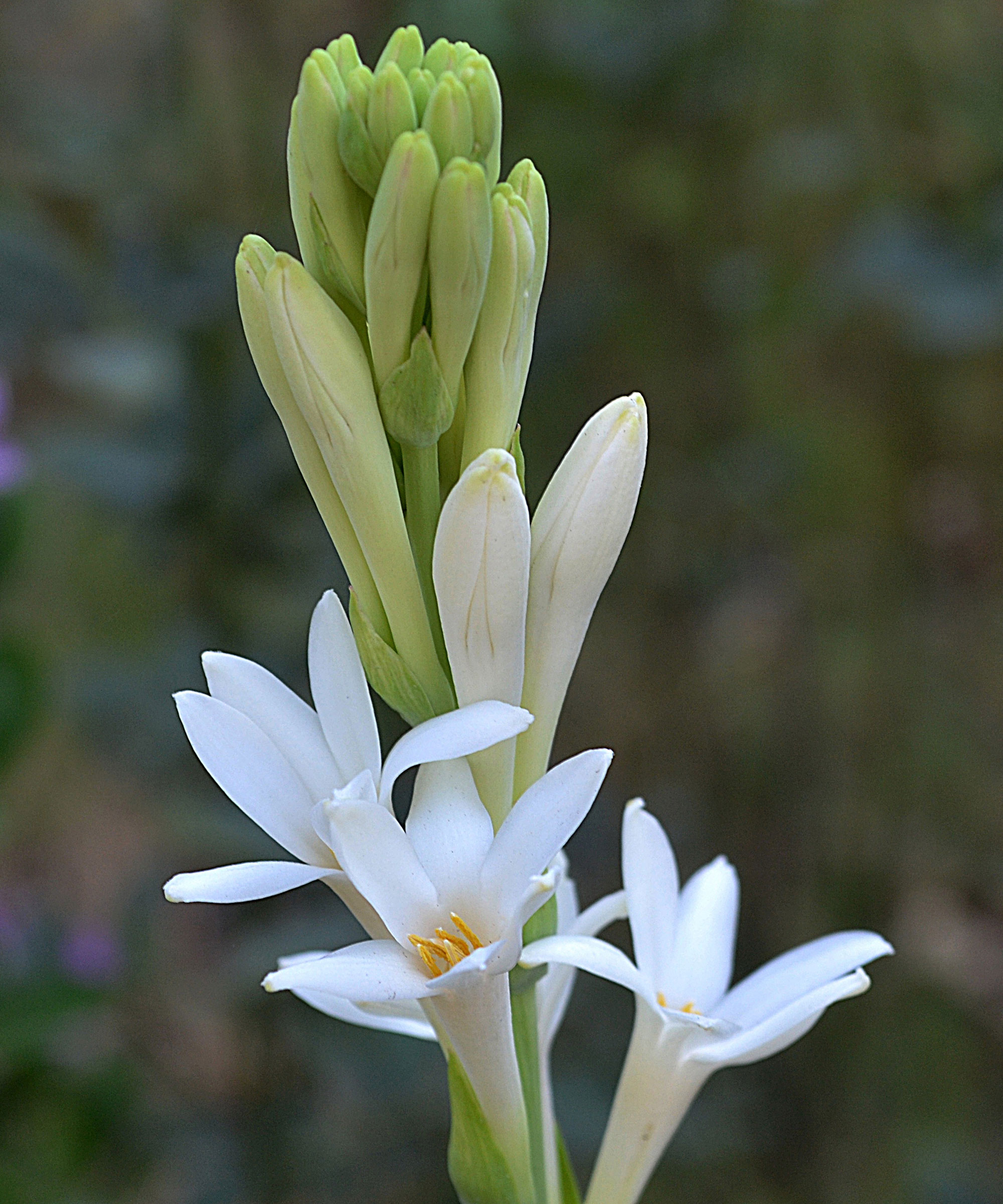
Tuberose bloom from late spring to early fall, either in containers or in the garden
How to grow tuberose
If you're looking for an easy-care scented option for the summer garden make tuberose your go-to.
'Tuberose are best known for their incredible fragrance and stunning flowers and are used in the cut flower industry because of it,' says horticulturist Peggy Anne Montgomery. 'Some say they are the most fragrant flower in the world. Their waxy white flowers remind me of stephanotis.'
Tuberose look great planted en masse in flower beds and borders, edging the walkway to your front door, or filling pots as part of your summer container planting ideas on a sun-filled patio or porch where you can best enjoy the scent up close.

Peggy Anne Montgomery is a horticultural professional with more than 30 years' experience in garden marketing and communications. An account executive for the Garden Media Group, she currently represents Flowerbulb.eu.
Growing habits of tuberose
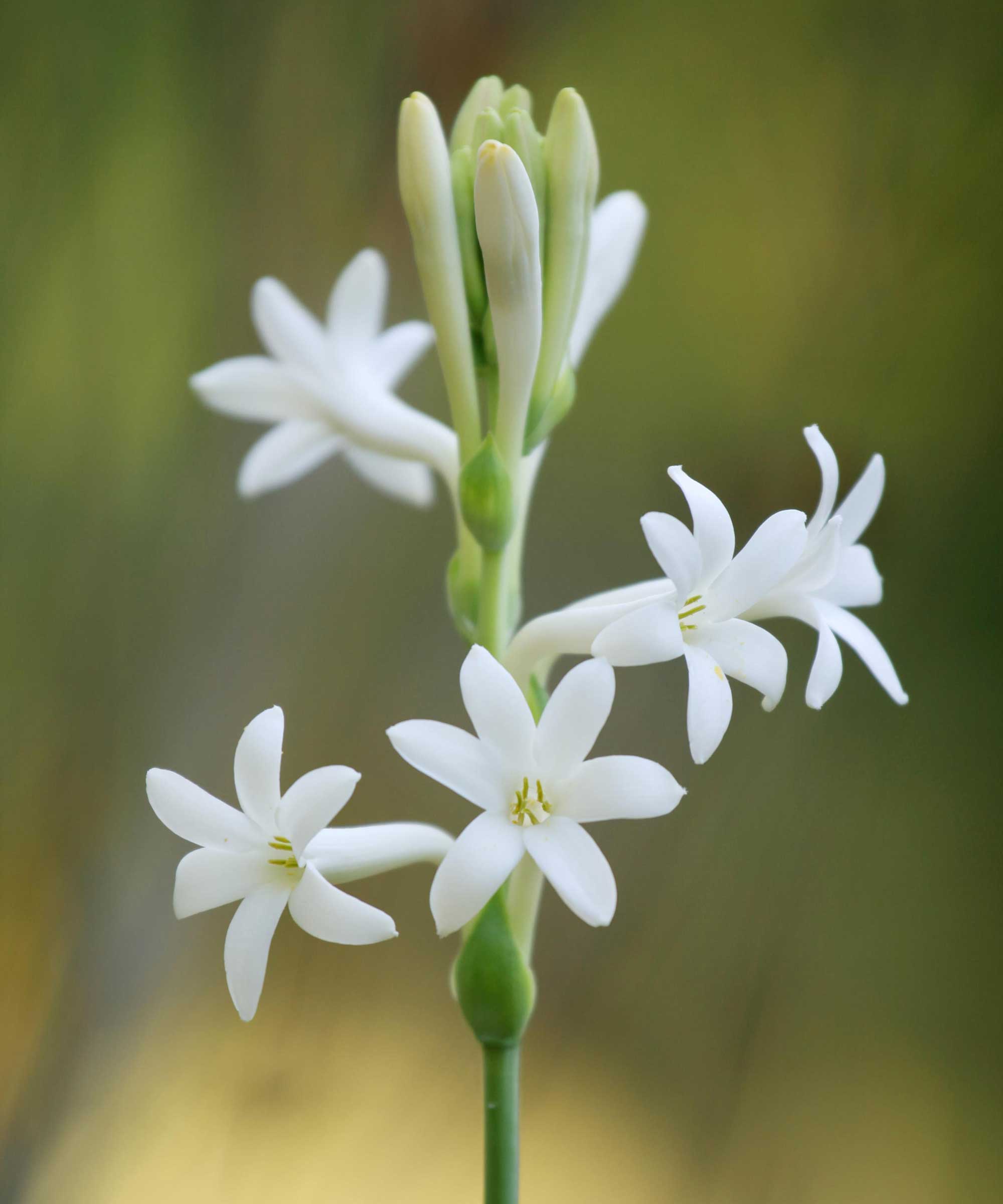
The typically white tubular blooms are borne on tall stalks that arise from strap-like leaves
'Polianthes tuberosa, commonly known as tuberose, is a bulb (actually a tuberous rooted rhizome) that is hardy in zones 7 to 10,' explains Peggy Anne.' It has a unique story. While it is likely native to Mexico and has been in cultivation since pre-Columbian times, it is not known to exist naturally in the wild today.'
There are many varieties to choose from. Although most commonly white you can also get pink varieties of tuberose. 'Besides the pearly white flowers, they are now available in shades of cherry, pink, and even yellow,' says Peggy Anne, 'They also come in single and double varieties. The flower stems have an impressive show of flowers and buds rising above grass-like foliage.'
Most types grow between 2-3 feet high and spread about 1 foot wide, making them ideal for a display in large pots too. 'They work wonderfully well in containers with regular water and organic bulb fertilizer.'
Tuberose plants are easy to grow and low-maintenance. The good news is that although they multiply quickly they're not invasive. Their semi-succulent nature means that as long as you plant them in the right spot they don't need much looking after.
What's more, tuberose is relatively pest-free. 'They don’t have serious pest or disease problems, but keep an eye out for aphids and give your plants plenty of room for air circulation around the foliage and flowers.'
Growing advice for tuberose
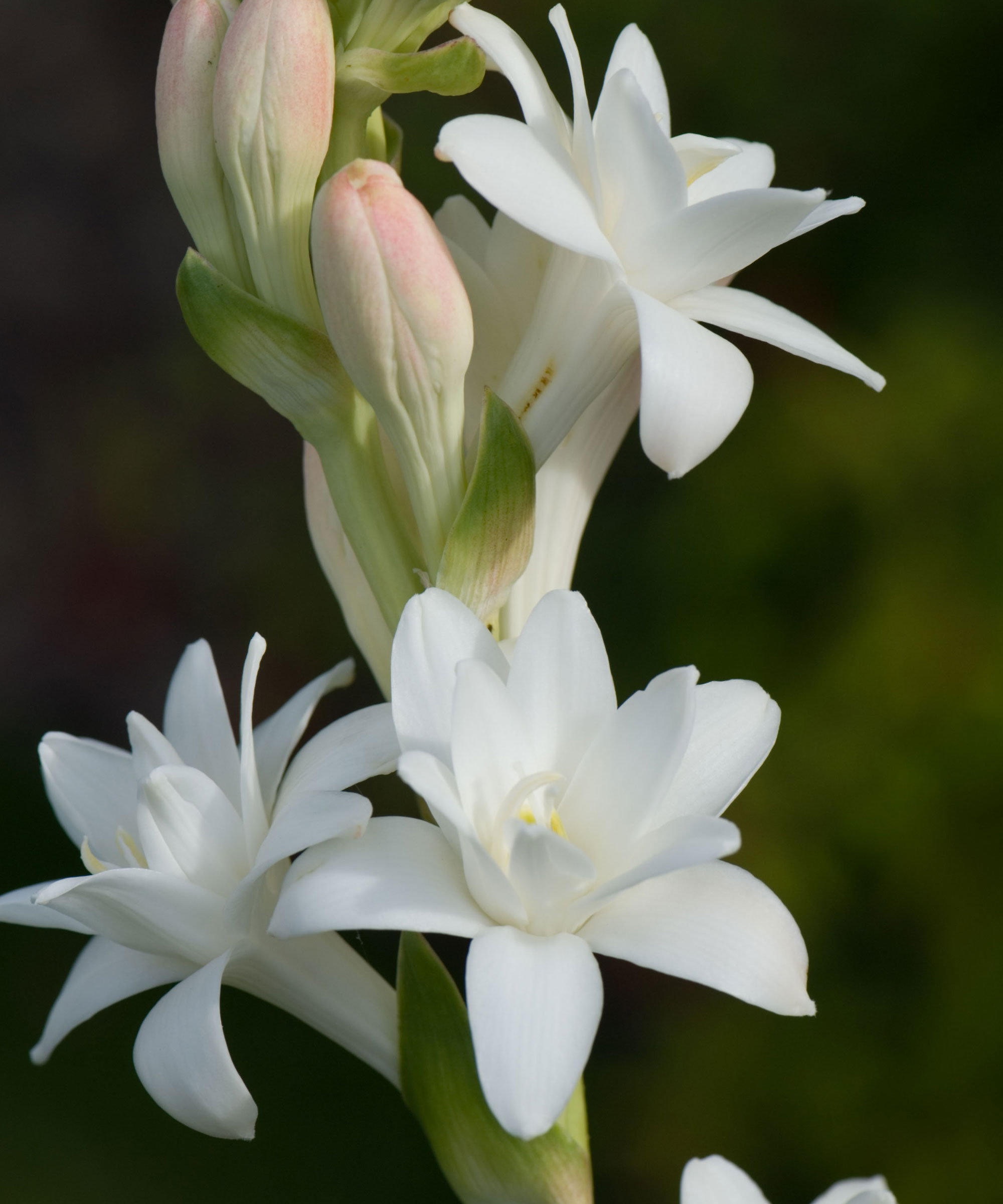
'The Pearl' tuberose is a double-flowered cultivar. The tall flower spikes, reaching up to 3 feet in height, feature numerous blooms, which change from pink to nearly pure-white.
Soil: 'Grow tuberose in rich, fertile, well-drained soil with consistent moisture in summer,' says horticulturalist Jenny Rose Carey. Their tuberous roots will rot if they sit in wet soil. Sandy soil is good for these plants but will need amending, while loose, loamy soil is ideal. A slightly acidic pH is best, in the range of 6.0-6.5.
Light: These plants need full sun to produce the best flowers, around six to eight hours per day for optimal flowering. Plant yours in a spot that receives plenty of sunlight for most of the day. If you live in a hot climate give your plants some shade in the afternoon for protection. A layer of mulch around the base of the plant will also help to retain some moisture in the soil.
Watering: If you experience very dry weather during the growing season, you’ll need to water your plant regularly to prevent it wilting. At the same time it’s important not to over-water tuberose, which will expose the roots to the risk of fungal rot. If you live in a humid climate ensure proper air circulation around your plant too, and only water when the surface of the soil is dry.
Fertilizing: Tuberose are heavy feeders so need plenty of nutrients if you want to get the most flowers. During the growing season, fertilize your tuberose every four to six weeks. If you plant them in poor soil or neglect to fertilize them, they will usually still flower but not as prolifically. It's a good idea to apply a slow-release, granular fertilizer at the beginning of the season. A fertilizer that is rich in phosphorus will encourage more flowers. Allowing your tuberose plants to spread around without dividing them every couple of years will reduce the amount of flowers you get, so reorganize clumps regularly and be sure to share any overs with neighbors and friends.
Pruning: During the growing season trim off any brown or yellow foliage, as well as deadheading your tuberose regularly to prompt flower production. The more stems you cut from the plant for maintenance or indoor displays, the more it will produce. In fall wait until the first frost before pruning dead foliage. In warm climates cut the foliage down to about six inches tall at the end of the growing season. 'When the foliage wilts and begins to turn yellow in fall, taper off watering too,' says Peggy Anne Montgomery. 'When dry, the bulbs can be lifted and stored indoors.'

Horticulturalist Jenny Rose Carey is author of The Ultimate Flower Gardener's Guide, and former senior director at the Pennsylvania Horticultural Society's Meadowbrook Farm.
FAQs
When is the best time to plant tuberose?
'Plant rhizomes in the spring after the danger of frost has passed and nights are in the 60s,' says Peggy Anne. 'If you have a greenhouse or other warm space, you can start them indoors early and bring them outside when temperatures are high enough.'
Mix some well-rotted compost or manure into the soil when you're ready to plant. This will break down slowly, providing your plant with a regular supply of nutrients. Space bulbs 6 to 8 inches apart and cover with an inch or two of soil. Don't plant them too deeply. A depth of around 2 inches is fine.
You can also plant the bulbs in the fall but not if you live in zones 3-5. In zones 6-10 get the bulbs in the ground before frosts begin. Once the bulbs are planted cover the area with 6 to 8 inches of mulch, straw, or leaves for winter protection, as it's important the bulbs don't freeze in the ground.
How do you overwinter tuberose?
If you live in a cooler climate, grow tuberose plants in containers that you can bring indoors for winter. 'Tuberose is not hardy everywhere,' says Jenny Rose Carey. 'They can be grown in containers or lifted out of the ground to be stored inside in a cool dark place for winter.'
Native to a hot and humid climate, tuberose thrives in environments with tropical conditions which means it's not cold-tolerant. A key part of how to grow tuberose is addressing your plant's needs. If you mulch heavily in the fall, your tubers should survive temperatures as low as 0°F. This makes them fine for planting in zone 7, but any colder and your tubers won’t survive winter.
Check out other plants to bring indoors in November if cold nights and first frosts are on the way.
Design expertise in your inbox – from inspiring decorating ideas and beautiful celebrity homes to practical gardening advice and shopping round-ups.
Lifestyle journalist Sarah Wilson writes about flowers, plants, garden design and gardening trends for Homes & Gardens. She has studied introductory garden and landscape design and floristry, and also has an RHS Level 2 qualification in the Principles of Plant Growth and Development. She is a regular contributor to Homes & Gardens and Livingetc. She has also written for Real Homes, Modern Gardens and Country Homes & Interiors magazines.
